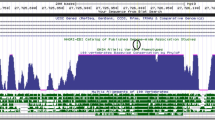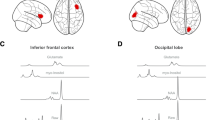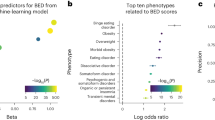Abstract
Eating disorders (ED), such as anorexia nervosa (AN) and bulimia nervosa (BN), are complex psychiatric disorders where different genetic and environmental factors are involved. Several lines of evidence support that brain-derived neurotrophic factor (BDNF) plays an essential role in eating behaviour and that alterations on this neurotrophic system participates in the susceptibility to both AN and BN. Accordingly, intraventricular administration of BDNF in rats determines food starvation and body weight loss, while BDNF or its specific receptor NTRK2 knockout mice develop obesity and hyperphagia. Case–control studies also suggest a BDNF contribution in the aetiology of ED: we have previously reported a strong association between the Met66 variant within the BDNF gene, restricting AN (ANR) and minimum body mass index (minBMI) in a Spanish sample, and a positive association between the Val66Met and −270C/T BDNF SNPs and ED in six different European populations. To replicate these results, avoiding population stratification effects, we recruited 453 ED trios from eight European centres and performed a family-based association study. Both haplotype relative risk (HRR) and haplotype-based haplotype relative risk (HHRR) methods showed a positive association between the Met66 allele and ANR. Consistently, we also observed an effect of the Met66 variant on low minBMI and a preferential transmission of the −270C/Met66 haplotype to the affected ANR offspring. These results support the involvement of BDNF in eating behaviour and further suggest its participation in the genetic susceptibility to ED, mainly ANR and low minBMI.
Similar content being viewed by others
Log in or create a free account to read this content
Gain free access to this article, as well as selected content from this journal and more on nature.com
or
References
Garner DM : Pathogenesis of anorexia nervosa. Lancet 1993; 341: 1631–1635.
Thoenen H : Neurotrophins and neuronal plasticity. Science 1995; 270: 593–598.
Lo DC : Neurotrophic factors and synaptic plasticity. Neuron 1995; 15: 979–981.
Barde YA : Neurotrophins: a family of proteins supporting the survival of neurons. Prog Clin Biol Res 1994; 390: 45–56.
Lyons WE, Mamounas LA, Ricaurte GA et al: Brain-derived neurotrophic factor-deficient mice develop aggressiveness and hyperphagia in conjunction with brain serotonergic abnormalities. Proc Natl Acad Sci USA 1999; 96: 15239–15244.
Pelleymounter MA, Cullen MJ, Wellman CL : Characteristics of BDNF-induced weight loss. Exp Neurol 1995; 131: 229–238.
Kernie SG, Liebl DJ, Parada LF : BDNF regulates eating behavior and locomotor activity in mice. EMBO J 2000; 19: 1290–1300.
Rios M, Fan G, Fekete C et al: Conditional deletion of brain-derived neurotrophic factor in the postnatal brain leads to obesity and hyperactivity. Mol Endocrinol 2001; 15: 1748–1757.
Xu B, Goulding EH, Zang K et al: Brain-derived neurotrophic factor regulates energy balance downstream of melanocortin-4 receptor. Nat Neurosci 2003; 6: 736–742.
Ribases M, Gratacos M, Armengol L et al: Met66 in the brain-derived neurotrophic factor (BDNF) precursor is associated with anorexia nervosa restrictive type. Mol Psychiatry 2003; 8: 745–751.
Ribases M, Gratacos M, Fernandez-Aranda F et al: Association of BDNF with anorexia, bulimia and age of onset of weight loss in six European populations. Hum Mol Genet 2004; 13: 1205–1212.
Koizumi H, Hashimoto K, Itoh K et al: Association between the brain-derived neurotrophic factor 196G/A polymorphism and eating disorders. Am J Med Genet 2004; 127B: 125–127.
Falk CT, Rubinstein P : Haplotype relative risks: an easy reliable way to construct a proper control sample for risk calculations. Ann Hum Genet 1987; 51: 227–233.
Lazzeroni LC, Lange K : A conditional inference framework for extending the transmission/disequilibrium test. Hum Hered 1998; 48: 67–81.
Bulik CM, Sullivan PF, Carter FA, Joyce PR : Initial manifestations of disordered eating behavior: dieting versus binging. Int J Eat Disord 1997; 22: 195–201.
Bulik CM, Sullivan PF, Kendler KS : An empirical study of the classification of eating disorders. Am J Psychiatry 2000; 157: 886–895.
Gendall KA, Joyce PR, Sullivan PF, Bulik CM : Personality and dimensions of dietary restraint. Int J Eat Disord 1998; 24: 371–379.
Egan MF, Kojima M, Callicott JH et al: The BDNF val66met polymorphism affects activity-dependent secretion of BDNF and human memory and hippocampal function. Cell 2003; 112: 257–269.
Simske JS, Kaech SM, Harp SA, Kim SK : LET-23 receptor localization by the cell junction protein LIN-7 during C.elegans vulval induction. Cell 1996; 85: 195–204.
Jo K, Derin R, Li M, Bredt DS : Characterization of MALS/Velis-1, -2, and -3: a family of mammalian LIN- 7 homologs enriched at brain synapses in association with the postsynaptic density-95/NMDA receptor postsynaptic complex. J Neurosci 1999; 19: 4189–4199.
Gorwood P, Ades J, Bellodi L et al: The 5-HT(2A) -1438G/A polymorphism in anorexia nervosa: a combined analysis of 316 trios from six European centres. Mol Psychiatry 2002; 7: 90–94.
Gabrovsek M, Brecelj-Anderluh M, Bellodi L et al: Combined family trio and case–control analysis of the COMT Val158Met polymorphism in European patients with anorexia nervosa. Am J Med Genet 2004; 124B: 68–72.
Ardlie KG, Lunetta KL, Seielstad M : Testing for population subdivision and association in four case-control studies. Am J Hum Genet 2002; 71: 304–311.
Strober M, Freeman R, Morrell W : The long-term course of severe anorexia nervosa in adolescents: survival analysis of recovery, relapse, and outcome predictors over 10–15 years in a prospective study. Int J Eat Disord 1997; 22: 339–360.
Purcell S, Cherny SS, Sham PC : Genetic power calculator: design of linkage and association genetic mapping studies of complex traits. Bioinformatics 2003; 19: 149–150.
Dudbridge F : Pedigree disequilibrium tests for multilocus haplotypes. Genet Epidemiol 2003; 25: 115–121.
Terwilliger JD, Ott J : A haplotype-based ‘haplotype relative risk’ approach to detecting allelic associations. Hum Hered 1992; 42: 337–346.
Abecasis GR, Cardon LR, Cookson WO : A general test of association for quantitative traits in nuclear families. Am J Hum Genet 2000; 66: 279–292.
Acknowledgements
We thank the patients for participation in the study. Financial support was received from the European Union (Framework-V Multicentre Research Grant, QLK1-1999-916, coordinated by Janet Treasure and David Collier), the ‘Psychiatry Genetics network (G03/184), ‘Instituto de Salut Carlos III – FIS’ and the ‘Departament d'Universitats i Societat de la informació, Generalitat de Catalunya’. Marta Ribases was recipient of a BEFI fellowship from the FIS (Spanish Ministry of Health) and the CRG (Center for Genomic Regulation).
Author information
Authors and Affiliations
Corresponding author
Rights and permissions
About this article
Cite this article
Ribasés, M., Gratacòs, M., Fernández-Aranda, F. et al. Association of BDNF with restricting anorexia nervosa and minimum body mass index: a family-based association study of eight European populations. Eur J Hum Genet 13, 428–434 (2005). https://doi.org/10.1038/sj.ejhg.5201351
Received:
Revised:
Accepted:
Published:
Issue date:
DOI: https://doi.org/10.1038/sj.ejhg.5201351
Keywords
This article is cited by
-
Evidence for three genetic loci involved in both anorexia nervosa risk and variation of body mass index
Molecular Psychiatry (2017)
-
BDNF-Val66Met variant and adolescent stress interact to promote susceptibility to anorexic behavior in mice
Translational Psychiatry (2016)
-
Higher reward value of starvation imagery in anorexia nervosa and association with the Val66Met BDNF polymorphism
Translational Psychiatry (2016)
-
The BDNF gene Val66Met polymorphism as a modifier of psychiatric disorder susceptibility: progress and controversy
Molecular Psychiatry (2015)
-
BDNF genetic variability modulates psychopathological symptoms in patients with eating disorders
European Child & Adolescent Psychiatry (2014)



